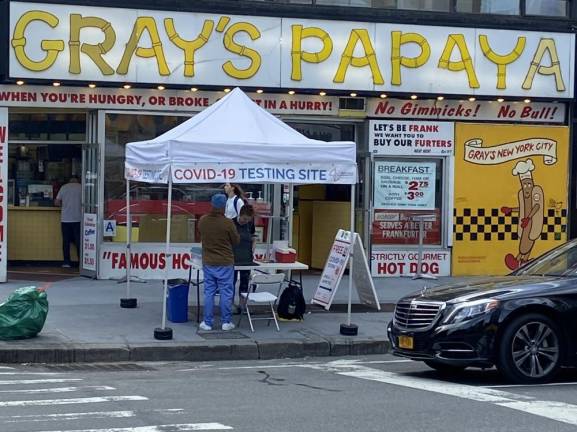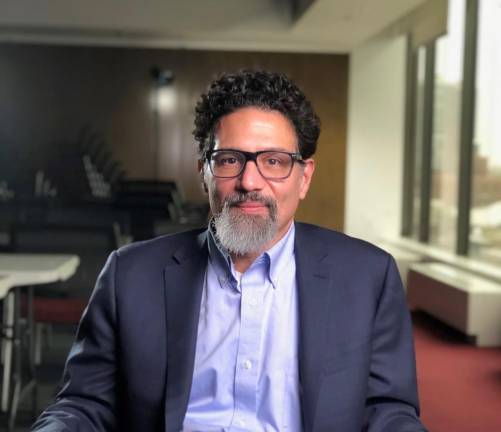Way more New Yorkers are being infected with COVID-19 these days than the official numbers report, and, compounding the challenge, way too many of those New Yorkers are unaware of the treatment now available to prevent their infection from becoming life-threatening, according to the latest research.
Half-way through year three of this pandemic of the no longer novel coronavirus, our efforts to cope continue to trail the shifting reality.
The latest variants of the virus are so widespread that researchers estimate 1.5 million New Yorkers were infected during the last week of April and the first week of May. The official COVID-19 case count for those two weeks was 49,253.
“The true magnitude of NYC’s BA.2/BA.2.12.1 surge was vastly underestimated by routine SARS-CoV-2 surveillance,” the researchers, from the School of Public Health at The City University of New York, wrote in a paper distributed Friday on the preprint service Medrxiv.
“This gap between official case counts and actual burden of infection appears to be widening with time,” said the researchers, lead by CUNY professor Denis Nash. “The estimate of 1.5 million infections is about 31-fold higher than the 49,253 cases in the official NYC case counts ... our prior similar survey during the BA.1 surge in NYC estimated that reported cases were 3-4 times lower than the true number of infections.”
In both cases, the researchers based their estimates on telephone and online surveys of about 1,000 New Yorkers, who were asked a variety of questions to establish whether they had had a confirmed or likely infection in the recent past. The researchers recommended that public health agencies conduct such survey’s regularly to help track the pandemic, “at least until there is more certainty that the impact of future surges on public health outcomes (hospitalizations and deaths) will be substantially diminished.”
Unreported Test Results
There appear to be multiple reasons for the undercount. Many people infected with COVID-19 never get tested or only test at home with self-administered kits, whose results go unreported. But the CUNY research also suggests that thousands of positive test results from clinics and pop-up testing sites also are not being reported.
Perhaps as worrisome as the unrecorded scale of the pandemic, was what the researchers picked up about a lag in the response.
“Our study suggests that awareness and uptake of nirmatrelvir/ritonavir (PaxlovidTM) was low among adults with SARS-CoV-2 infection,” they reported.
Paxlovid is the brand name of an antiviral treatment by Pfizer that has been shown in clinical trials to be highly effective in reducing the risk of serious illness or death from COVID-19. These trials were conducted among unvaccinated patients, but both the city and federal governments recommend the treatment for the vaccinated, too, especially if they are in vulnerable groups.
Long COVID Research
Trials are currently underway to gauge the effectiveness of Paxlovid among those already vaccinated before they became infected. An additional line of research is seeking to determine whether Paxlovid, as well as belated vaccination, can help reduce the syndrome known as Long COVID, which appears to afflict between 20% and 25% of all COVID patients, according to the latest research.
In the meantime, the federal government reports having an unused stock of a million of the five-day courses of Paxlovid.
Nash and his colleagues estimated that 29% of those infected with Covid at the end of April and beginning of May met the general requirements to receive Paxlovid, being 65 or older or having one of the numerous “comorbidities” that increase vulnerability to the virus.
Yet only about 15 percent reported actually receiving the treatment and more than half (55%) said they had not heard of it. Three percent said they tried to get it but couldn’t.
Nash and his colleagues expressed concern that the data “suggested that there may be some important inequities in antiviral access” that call for more attention.
“These are potentially important findings that warrant further investigation and monitoring, with programmatic course corrections as needed,” the researchers said. “Inequitable uptake of antivirals among vulnerable individuals with COVID-19 could further exacerbate inequities in the burden of SARS-CoV-2 which has had disproportionate effects on racial/ethnic minorities and other groups.”
Use of Paxlovid was far higher among those with health insurance, for example, and those with higher incomes and college educations. Whites and Asians used the treatment more than blacks and Hispanics.
“Attention to equity in the design and implementation of large scale public health initiatives, and anticipating how they may create new inequities or exacerbate existing inequities is essential,” the researchers urged.
Paxlovid Distribution
Federal officials say that uptake of Paxlovid is actually higher here in the Northeast, so it would be logical to assume that the CUNY findings understate the national shortfalls in Paxlovid distribution.
The White House announced on Thursday that it was taking steps to make Paxlovid easier to get. This effort includes the establishment of federally funded clinics, including in New York, that will be authorized to administer COVID tests and immediately prescribe Paxlovid for those who test positive and met the recommended requirements.
“Fundamentally,” Dr. Ashish K. Jha, the White House COVID-19 coordinator, said to the New York Times, “what we’re trying to do is get to the point where COVID deaths are largely preventable, and I think we’re pretty close to there.”
On average, seven New Yorkers die each day with COVID-19, far below the worst periods, in April 2020 (average of 760 deaths a day with probable or confirmed COVID-19 infections) or January of this year (average of 128 deaths a day).
“Deaths from this disease really should become increasingly rare,” Jha said.
But the researchers noted a factor that may complicate this hope.
“Even though many individuals vulnerable to a severe outcome were infected and did not use rapid antivirals,” they reported. “It appears that most had a high degree of protection against a severe outcome through vaccination and boosters, on top of a history of prior infection.”
They said this so-called hybrid protection from the blend of vaccination and previous infection, “could partly explain why NYC has not yet seen a major increase in hospitalizations during this current surge, even as the BA.2.12.1 predominates.”
They noted, however, that this protection was “temporary” and added: “Given the uncertainty of how the remainder of the surge will impact severe outcomes among those who remain susceptible, the magnitude of the current surge dictates a need for additional precautions to reduce the risk of spread in the general population.”
The latest variants of the virus are so widespread that researchers estimate 1.5 million New Yorkers were infected during the last week of April and the first week of May. The official COVID-19 case count for those two weeks was 49,253.

